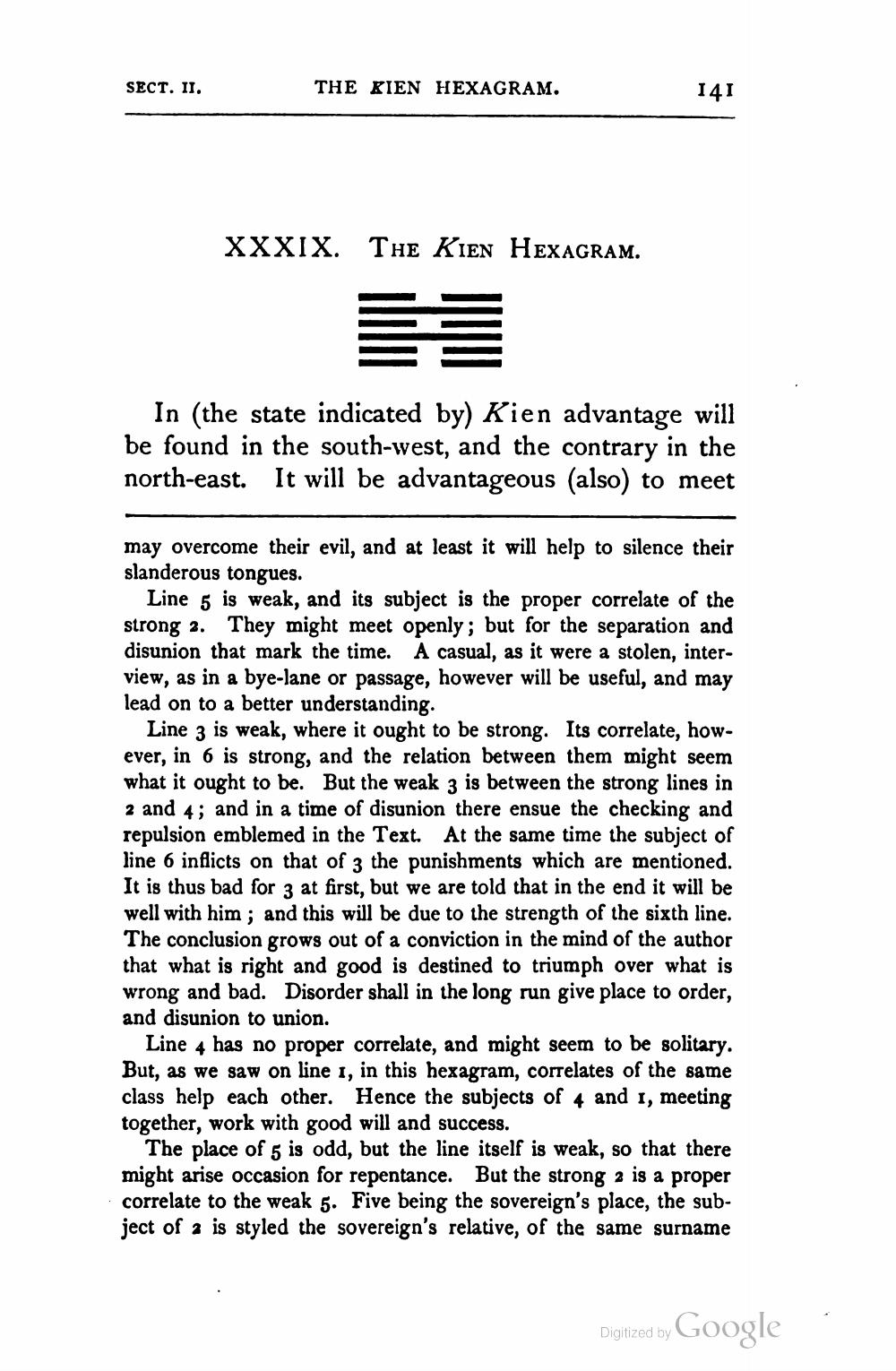________________
SECT. II.
THE KIEN HEXAGRAM.
XXXIX. THE KIEN HEXAGRAM.
14I
In (the state indicated by) Kien advantage will be found in the south-west, and the contrary in the north-east. It will be advantageous (also) to meet
may overcome their evil, and at least it will help to silence their slanderous tongues.
Line 5 is weak, and its subject is the proper correlate of the strong 2. They might meet openly; but for the separation and disunion that mark the time. A casual, as it were a stolen, interview, as in a bye-lane or passage, however will be useful, and may lead on to a better understanding.
Line 3 is weak, where it ought to be strong. Its correlate, however, in 6 is strong, and the relation between them might seem what it ought to be. But the weak 3 is between the strong lines in 2 and 4; and in a time of disunion there ensue the checking and repulsion emblemed in the Text. At the same time the subject of line 6 inflicts on that of 3 the punishments which are mentioned. It is thus bad for 3 at first, but we are told that in the end it will be well with him; and this will be due to the strength of the sixth line. The conclusion grows out of a conviction in the mind of the author that what is right and good is destined to triumph over what is wrong and bad. Disorder shall in the long run give place to order, and disunion to union.
Line 4 has no proper correlate, and might seem to be solitary. But, as we saw on line 1, in this hexagram, correlates of the same class help each other. Hence the subjects of 4 and 1, meeting together, work with good will and success.
The place of 5 is odd, but the line itself is weak, so that there might arise occasion for repentance. But the strong 2 is a proper correlate to the weak 5. Five being the sovereign's place, the subject of a is styled the sovereign's relative, of the same surname
Digitized by Google




